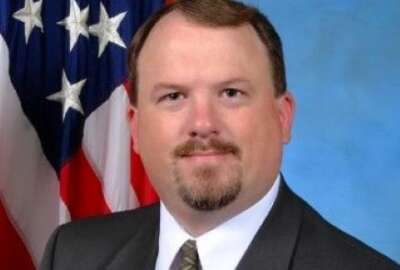
DISA eyes $170M in savings from Fourth Estate consolidation program
DISA releases a request for information to industry for a government owned, contractor operated approach to back-office IT services and network consolidation an...
BALTIMORE, MARYLAND–Outside of the drama of the $10 billion cloud procurement known as JEDI and the excitement over the almost $9 billion cloud procurement known as DEOS, there is the Fourth Estate consolidation program in the Defense Department.
It’s as big, worth about $10 billion today, but likely much less over the course of the next decade.
It’s not as controversial with no dramatic court case or battle between system integrators like with JEDI and DEOS, respectively.
But the Fourth Estate consolidation and optimization effort may have more impact, be more significant and, most importantly, show the DoD path forward in its move to the cloud.
Tony Montemarano, the executive deputy director of the Defense Information Systems Agency, at the AFCEA TechNet day, said over the next decade the agency will bring together the networks and commodity IT of the 14 defense agencies, including the Defense Logistics Agency, the Defense Finance and Accounting Service and the Defense Health Agency.
“We are taking the commodity IT of 13 other Fourth Estate organizations and bringing them together with DISA, not mission IT, but the desktops, the business applications, and trying to bring them together, the contracting and personnel,” he said. “Close to 1,000 new employees are coming to DISA effective the first of October. We have to come to grips with taking these independent, commodity environments and bringing them together. It’s a major undertaking when it comes to coming to grips with contracting, coming to grips with personnel, you can imagine the nightmare dealing with the whole thing, and everyone is cooperating.”
Montemarno received the uneasy laugh from the audience with the last comment, but there is actually a lot of truth to what he said.
Drew Jaehnig, the chief of the Fourth Estate optimization program and chief of the defense enclave services, said at TechNet that there are two main oversight bodies for this consolidation. The senior working group led by Danielle Metz, the principal director for the acting deputy CIO for Information Enterprise, in the Pentagon, which is a weekly meeting that provides governance, structure and direction. Then there is the IT Procurement Request board, which handles the change management process for any of the 14 agencies, who want to change any of their current technology or contracts.

“That goes through our office, basically for a quality check for the lack of a better description, and then it goes up to DoD CIO for adjudication,” Jaehnig said. “For the most part, it’s pretty team oriented. The requirements for the request for information that you see on the street was developed by all 14 agencies together. We had two summits, one partly in person and the rest virtual. There has been very little uncooperative behavior from the Fourth Estate in every sense of the world. Big agencies such as DFAS, DLA and others deserve a big shout out for helping to drive this and to stabilize the project. They have been very cooperative and we have nothing but good things to say about the folks in the Fourth Estate at this point.”
Jaehnig said there was some initial concern about the impact on personnel, but now most of the noise around the Fourth Estate program comes from the vendor community.
And that’s where the new RFI comes in. DISA released the notice on May 10 asking for input to create the Defense Enclave Services, which is a major piece to the broader Fourth Estate consolidation effort.
Jaehnig said DISA hopes industry submits comments to ensure they can meet its goals of cost savings, improved services and a consolidated and hardened network.
“The department thinks we should be able to save a significant amount of money and return that to the lethality for the department by combining these networks and reducing the footprint to the tune of about $170 million a year,” he said. “I like to say my deliverable to the department is not the new service, but the savings.”
The RFI is calling for comments on the Defense Enclave Services, which are a baseline set of services managed by the contractor and are “flexible, scalable, reliable, accessible and secure” from the desktop level through the Local Area Networks and provide “high assurance of connectivity to the data centers, native internet and government/industry cloud services.”
For example when it comes to the DEOS contract, DISA will buy the back-office and desktop collaboration tools for the rest of the 14 agencies instead each organization buying them separately.
DoD CIO memo coming soon
Jaehnig said the DoD CIO will sign a memo designating DISA as the sole service provider for back-office, commodity IT services and network infrastructure for these 14 agencies.
DISA and the 13 Fourth Estate agencies have been working on coming up with a common definition of commodity IT services over the last eight months.
“We tried to figure out where the dividing line is. There are some gray areas where which side of the fence some of these things fall on. We still are working on a few of the tiny details, and it also inserts some interesting complexity in regards to accreditation from the cyber perspective,” Jaehnig said.
Jaehnig said DISA and its partners have not yet decided on the acquisition strategy, which is what the RFI responses will help with. Responses to the RFI are due June 3.
The strategy could include the General Services Administration’s Enterprise Infrastructure Solutions (EIS) telecommunications modernizations contract.
No matter what the acquisition strategy looks like in the end, Jaehnig said the potential savings will come from reducing duplication of functions and of the more than 630 contracts vehicles currently in place across the 14 agencies.
“The amount of management overhead for these contracts is pretty staggering,” he said. “When look at the thread that runs through this, we see advantages and where we can get cost savings and improve services.”
Over the short term, DISA will move the first seven networks into DoDNet version 1 over the next year. The agency has a longer-term goal of moving the remaining nine agencies to and adding more emerging capabilities to DoDNet 2 by 2021 and beyond.
Jaehnig said the current projects around IT modernization will continue, but those agencies will have to go through the change management process to ensure they are interoperable with the future state.
Copyright © 2024 Federal News Network. All rights reserved. This website is not intended for users located within the European Economic Area.
Jason Miller is executive editor of Federal News Network and directs news coverage on the people, policy and programs of the federal government.
Follow @jmillerWFED





